A touch over 15 years ago, trams made a return to the streets of London, as Tramlink launched its first line through Croydon, and for all of those 15 years, trams have been looked after at a depot based not far from the local Ikea store.
Sitting next to Therapia Lane tram stop, the depot is what you expect, basically a lot of sidings for storage, and a shed for offices and maintenance work.
They can fit four trams in at a time, with a sunken pit for maintenance works, and a lathe to keep the wheels nice and round. As the trams have a very low wheelbase, most of the facilities are on the roof of the trams, so much of the maintenance work is done up there, necessitating an unusual, by train-shed norms, rooftop working facilities.
A wire wall is also required to stop people from falling off, should they be so inclined to do so.
The tram network has 31 vehicles, with 3 more on order to cope with planned network upgrades.
In a nod to tram-geeks, the numbering system for the new trams follows directly on from the old trams that were shut-down in 1952. The highest numbered old tram was 2529, so the first of the new trams is number 2530.
Each week, one of the trams gets a deep clean on the outside, which was being carried out while we were there, and is clearly more than a mop over with a bucket, but a full machine polish and scrub down.
One of the “roads”, as the tracks are known as also has a row of jacks that can lift the tram up into the air, for replacements of the wheel bogies. Spare wheel bogies are kept on site, as they are a fairly critical feature of trams, and a small turntable allows them to be swapped over reasonably quickly.
One tram had developed a fault and was in the shed for maintenance works, which revealed the wheels without their customary covers. It turns out that in addition to the usual braking systems you might expect, they also carry large magnets. When an emergency brake has to be applied, they thump down, and essentially glue the tram to the tracks. Hence repeated warnings on the trams to hold on when travelling — the deceleration can be quite sudden if needed.
If a tram breaks down outside the shed, it can be coupled up to another tram and dragged back to the shed for repairs. However, if the brakes fail, then another tram has to be hitched onto the back — leading to the rare site of three trams joined together passing through Croydon. And with a police escort, as they block much of the road traffic when that long.
The nature of the streets and space available means that trams will never get any longer, as they could end up blocking road junctions, so the only way to increase capacity is to remove bottlenecks, and add more track.
This is in fact what is happening in places, with some sections of the currently single track being doubled up. Another more contentious plan would see trams add an extra street to the network in Croydon center. This is needed for a number of reasons.
One is that the tram network surrounds the planned huge Westfield shopping centre redevelopment, and it’s impossible for large vehicles to get to it when there are overhead tram power cables in the way. Adding another loop around the edge of the town centre allows bits to be taken out of service for large lorry movements without closing the network.
The loop has another long term benefit. Although the trams share the road with other traffic, they have priority at traffic lights. With increased trams on the lines, you could end up with road traffic effectively blocked at nearly permanent red lights to let trams pass. Adding more track and streets around the centre means they can continue to feed trams into the centre, without overloading the existing road junctions.
Back in the shed, and assuming that the three-car configuration isn’t needed, local shunting can be carried out by a crab — a battery-powered mini-locomotive that can pull trams around the place.
Yes, it is called the crab, possibly because it’s small and yellow.
The depot also houses offices, including the main control room, where staff keep an eye on the network both the signalling and the CCTV. Part of the 15-year cycle of wear and tear and ongoing upgrades is seeing a lot of the CCTV upgraded. This seemed apt as the colour bleed on the camera covering the exterior of East Croydon station at times looked as if a heavy snowfall had taken place.
The signalling is a mixture of automatic and manual.
If you walk around the rail section of the tramlink, you might see black wire loops in the tracks — these are the radio transponders that monitor if a tram has passed by, and also transmit information into the tram’s onboard route computers.
Incidentally, the announcements and displays are controlled by GPS locations, not the signalling. The two are kept separate.
The Tramlink (it has since dropped “Croydon” from the brandname) uses two types of trams, both originally designed for use in Germany. The older set from Bombardier, and a new set supplied by Stadler Rail.
Maintenance of the trams was recently brought back in-house, and their own staff look after both designs of trams, even though they are a decade apart in design.
One of the interesting safety features built into the older trams is that the doors need two hands to press two buttons, meaning that its impossible to drive the tram and open the doors by accident. The newer trams are getting that added at the moment.
The newer trams are also somewhat better laid out internally thanks to smaller profiles underneath by the bogies, but they are prone to being slower at opening doors and accelerating. One serious issue though is that the newer trams are more articulated than the older versions. Great for going around tight corners, but it means one fewer set of doors, which adds to the dwell time at tram stops.
So overall, a bit of a mixed picture in performance.
The market for trams in the UK is currently not large enough that it would be viable for TfL to commission a bespoke design for London, as with the tube, bus and future DLR.
However, with future extensions to the tram network being eyed up, it could be that a next-generation of London tram could be needed in a decade or two. Links are being considered to Sutton, Tooting, Brixton and even a restoration of the old Croydon trams to Crystal Palace.
What seems to be the favoured of several options at the moment though looks to be a short link up to South Wimbledon, which offers them a passenger link to the Northern Line, but is also a way of increasing the capacity at the terminus ends of the line, so that trams can be turned around more efficiently and thus run more trams along the rest of the line back to Croydon.
On that topic, works are shortly to start at Wimbledon station to add a second platform for the trams. At the moment, there is just one platform, which means that there can never be any less than a 7-minute gap along that section of tram line, as it takes that long to reverse the tram back out of the station.
Adding a second platform — staggered slightly in the same way the London Overground did at Clapham Junction — means that they can run trams with intervals of just 4 minutes apart. It’s still a bottleneck getting into and out of the station, but at least one major barrier to capacity increases will finally be solved.
Even if it does mean the closure of the station until the end of the year to carry out the upgrades.
And finally, considering the heritage of the early trams in Croydon — the first one ran back in October 1879 — it is interesting to note that the planning permission for the upgrade at Wimbledon Station was given under powers granted to the London and South Western Railway — back in 1834.
Which seemed oddly amusing.
The site visit was part of Croydon Heritage week, where the depot was opened to the public on pre-booked tours.
A few more photos:


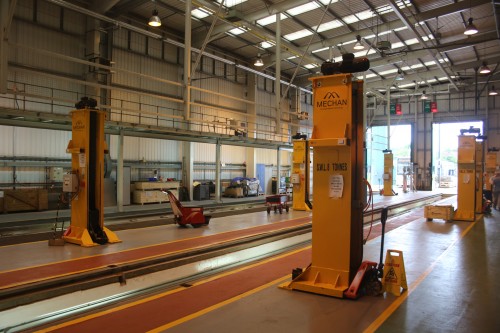
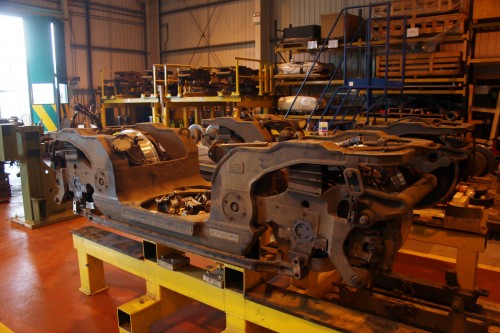

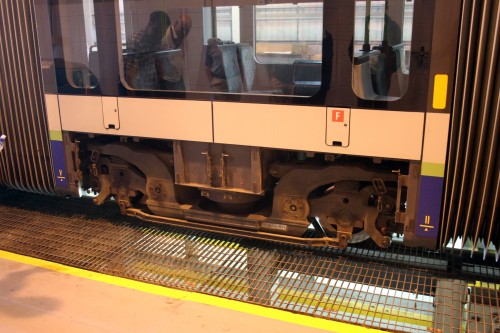
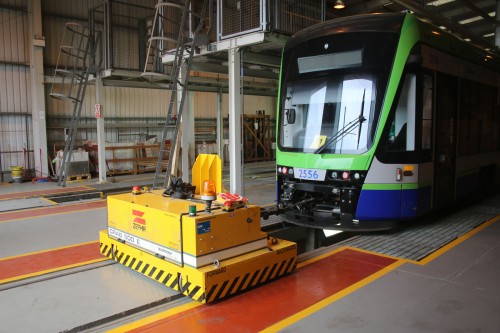


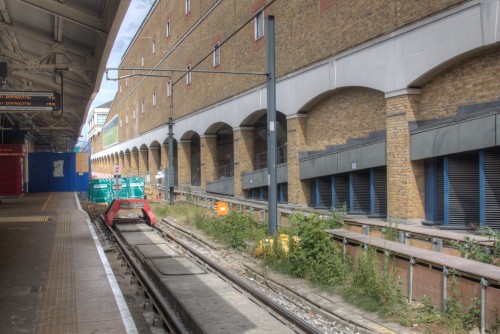
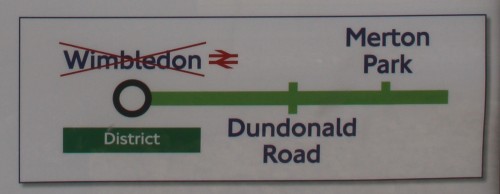
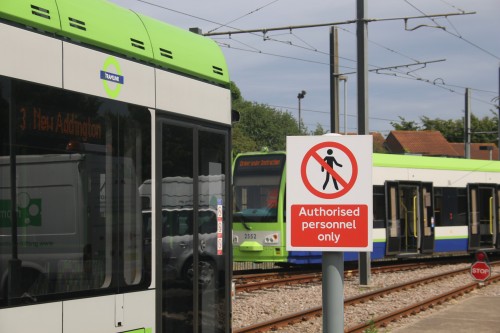
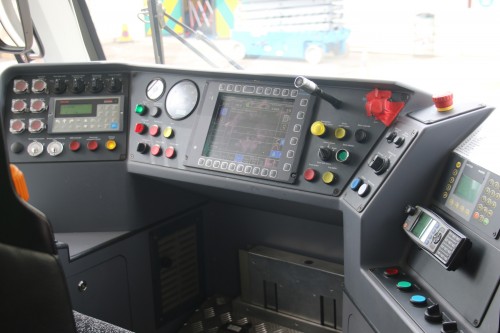

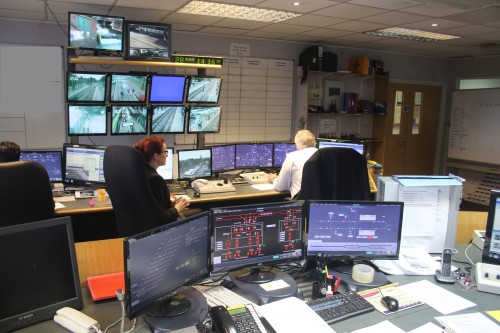







Good stuff.
I have never counted the number of doors but if there are fewer on the Stadler then they are partially mitigated by having them better spread out with a single door by the drivers cab. This is only on one side but still helps.
It is not true that the trams cannot be replaced by longer trams or possibly doubled up. It is just very expensive. To double the length of all tram stops (or make suitable alternative arrangements such as relocation) is estimated to cost £100 million. This is not the favoured first option as far as TfL are concerned as they would rather run more trams. Croydon Council seem to prefer this approach due to the number of trams effect on other traffic at junctions. However I am sure Croydon Council have no appreciation of the magnitude of the task involved. Eventually though, with the redevelopment of Croydon and the extra demand predicted, lengthening the trams may well one day be the only option left.
Anything can be fixed with money, but there is another factor limiting the length of trams though — the space between road junctions.
Some of the roads are shorter than a tram would end up being, meaning that a stopped tram would also block the junctions. Not a situation that would be acceptable without considerable, and expensive mitigation.
Interesting article. Thanks.
PS Its by “Therapia Lane” not “Therapia Road”.
Corrected. Thanks
re the little tug being called the crab i wonder if the name arose because it sort of goes sideways (like a crab) compared to the ‘normal’ convention that a vehicle is longer than it is wide.
Damn, what is this crab made of ? It looks so small and in the same is pulling the whole train like it weighs a few hundred pounds. That gadget is smart, with some really nice design and is surely applicable in many different situations. Was very interesting to learn more about the Croydon’s tram sidings and repair depots. Just one question – what do you do with all the metal that is no longer usable ? Do you recycle it or try to implement some genius technology for reusing it ?
I love riding on the Croydon Tramlink. Been on it many times.